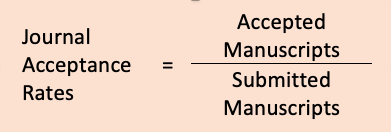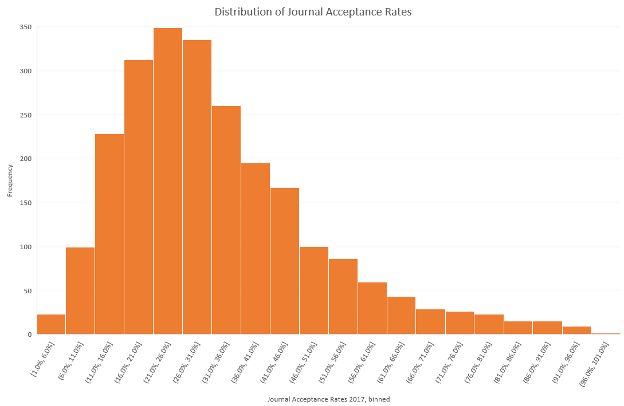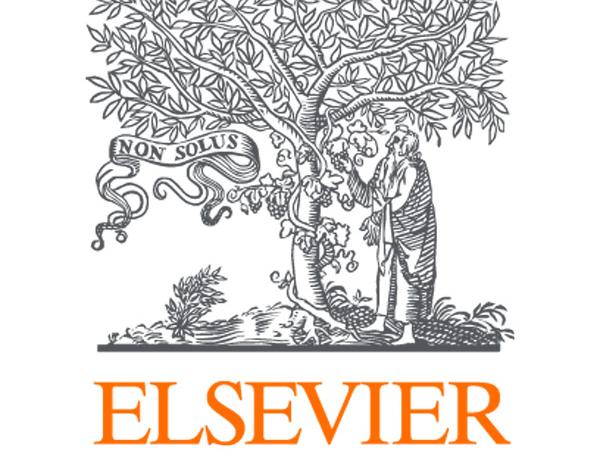
Don’t worry about journal acceptance rates – and here’s why

“Gate-keeping” is the selection of research that is deemed worthy of and relevant for publication in a journal. Choosing from unsolicited manuscripts submitted to the journal, the editorial team accepts some and rejects others, often after peer review. A way to quantify this process is the “journal acceptance rate”.

The acceptance rate appears regularly on journal home pages and via journal finder tools. But what does this seemingly straightforward measure signal to an author considering where to submit a manuscript?
What do acceptance rates measure?
Several practical factors influence the number of manuscripts that each journal accepts; these include the quality, interest in or importance of submitted manuscripts, the number of and relationships to other journals in the same field, and any manuscript backlogs or page limitations. Each factor will have a varying impact on acceptance rate.
The drivers of submission rates might include: the size of the field, the number of and relationships among journals, journal “brand” awareness or perceived prestige, and the potential impact of successful publication for the author.
The Metrics Toolkit suggests that the rate can be used as a “proxy for perceived prestige and demand as compared to availability”. Yet overlapping drivers for the two factors determine an acceptance rate.
And the concept of separating the “wheat from the chaff” is pushed to the limit when journals such as Nature and Science have acceptance rates of 10 per cent or less. Being rejected from extremely selective journals surely can’t tell us much about that manuscript.
Comparing acceptance rates with other journal attributes
In 2020, the International Center for the Study of Research at Elsevier explored a set of 2,371 journals – the majority of which (82 per cent) are published by Elsevier – and their acceptance rates in 2017. The journals represent a broad set of subject areas, journal types and ages, with all but the social sciences and arts and humanities well represented, a limitation of the findings presented here. The journals in the dataset had acceptance rates ranging from 1.1 per cent to 93.2 per cent in 2017, with an average of 32 per cent: overall, journals tend to accept fewer articles than they reject (Figure 1).

We then studied various attributes of the journals to see what aspects correlated with high or low acceptance rates.
| Journal attribute | Findings: relationship to acceptance rate |
|---|---|
| Journal size | The largest journals tend to have relatively lower acceptance rates compared with smaller journals, but even there the rates range between about 10 per cent and 60 per cent. |
| Journal age | The oldest journals do tend to have lower acceptance rates than younger journals, but the correlation is weak. |
| Journal impact | Extremely high-impact journals tend to show relatively low acceptance rates, but even then data included a lot of variation (acceptance rates still vary between about 5 per cent and 50 per cent). |
| Journal focus: articles or reviews | No relationship was identified between the share of review papers published and the acceptance rate. |
| Open access model | Gold open access journals tend to have higher acceptance rates than other open access models, but these also tend to be the youngest journals. |
| Topical diversity | No relationship between the breadth of a journal’s scope and the acceptance rate. |
| Journal subject area | Journals in the formal sciences (economics, computer science, mathematics) tend to have lower acceptance rates than those in the life sciences and medicine. |
Low acceptance rates are typically associated with very large, very old and very high-impact journals, as well as those that are not gold open access. That’s a mixed bag of attributes. The relationship to impact is nuanced and not strong enough be a clear signal. Importantly, even where relationships between journal attributes and acceptance rates could be identified, the variance in the acceptance rate is still so high that the findings are unlikely to be useful in the real world.
So where does that leave authors considering which journals they should submit their manuscript to?
We believe that journal acceptance rates do hold meaning; they indicate to prospective authors the probability of acceptance of their manuscript, based on historical success rates at the same journal. As such, we believe that journal acceptance rates have a place in the array of journal metrics. However, acceptance rate is not a signal of other attributes, and so it should be considered alongside other metrics and indicators but not conflated with them.
Rachel Herbert is a senior research evaluation manager, working within the International Center for the Study of Research, at Elsevier.
If you found this interesting and want advice and insight from academics and university staff delivered direct to your inbox each week, sign up for the THE Campus newsletter.
Additional Links
For more about journal acceptances and their interplay with other journal attributes, read the full report from the International Center for the Study of Research at Elsevier: “Accept me, accept me not: What do journal acceptance rates really mean?”



